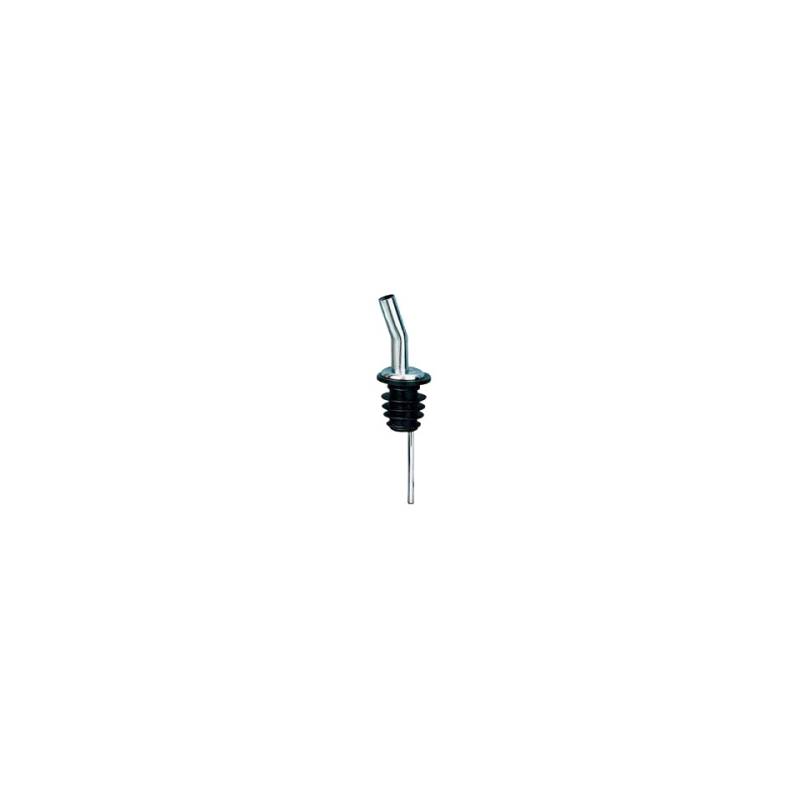The Metal pour spill stop 220/50 is certainly an indispensable tool for speeding up and facilitating work behind the bench.
The spill-stop is the world's best-known U.S.-made metal pour!
Whether you decide to use it to pour ingredients directly into the glass, shaker or jigger, rest assured that it will promote greater precision in your work, helping you to properly dose spirits, liqueurs and all other ingredients, quickly and easily.
The outlet hole is slightly wider than the classic metal pour, for an even faster continuous flow.
HOW TO USE IT
Putting it on the bottle is very simple, and you will immediately realize the difference from not having it.Whether you prefer to pour 'by eye' or with a jigger, metal pours are indispensable tools.
ON EVERY BOTTLE
Ideal if you work in an evening club, a cocktail bar and especially a nightclub. Speed and functionality are 2 prerogatives, because you cannot work at your best if both are not there.GUARANTEE OF SUCCESS
For many, the metal pour is associated with flair alone, but those who work behind the bar counter on a daily basis know that this little item is truly indispensable.Keep in mind that the average life of a metal pour is about 12 to 18 months, calculated based on multiple factors including technique of use, maintenance, and possible damage from dropping the bottle.
TREATMENT AND CARE: A MUST READ
How to prevent and/or solve problems related to metal pour.CAOUTCHOUC SEALING.
A leakage of liquid will occur if the crown seal of the metal pour becomes detached, usually at the time it is removed from the bottle. A good system to avoid the inconvenience is as follows: slightly move the rubber from under the steel ferrule, immerse the metal pour in hot water at 40-45°C and let it soak for 5 minutes, remove it from the water and push up the rubber gasket until it adheres to the metal part. Allow it to dry and proceed to the usual use.
Removing the gasket completely may result in constant leakage, because the rubber does not have a 'memory' effect (like rubber or plastic) and may no longer adhere to the water and air passage tubes, which is why they should be rinsed by only moving the rubber down half an inch and not by pulling it all the way off. It is also a good idea to avoid using lemon or vinegar-based cleaners, because rubber is sensitive to acid and tends to stiffen, losing its elasticity and decreasing its grip on the bottle neck.
SIGNS OF OXIDATION
The metal pour may also show some oxidation, especially under the steel ferrule and in the area of the welds or joint of the metal parts. This is not rust, as chemically neither steel nor brass, the compnents from which the product is made, create rust. Oxidation could appear either brown/black or whitish in color, and is created by the accumulation of sugar and the use of harsh detergents, which are harmful to chrome plating, bending and soldering. Proper washing prevents the problem from occurring. In case it has already occurred, we recommend gently scraping off oxidation with a small iron brush or small blade until the underlying brass or chrome plating is located. The brass that appears will have a rust-like color, but it is nothing more than the natural color of this material.
If you need assistance regarding orders, returns, shipments click here.
If you want to know more about this product but haven't found the answer you were looking for in the description, ask your question here, we will answer you as soon as possible.
You must be registered to access this feature Login

